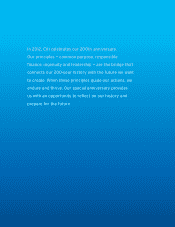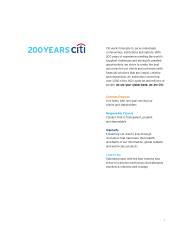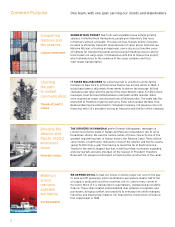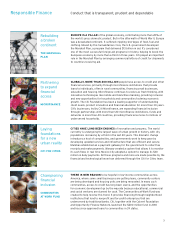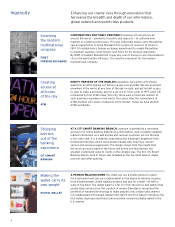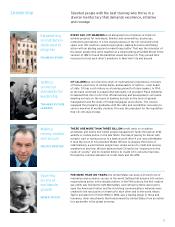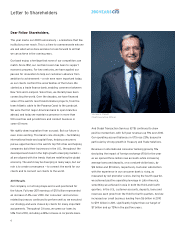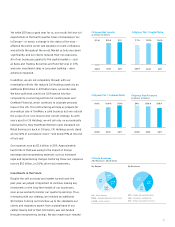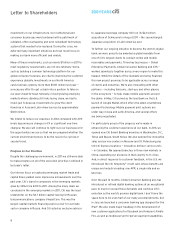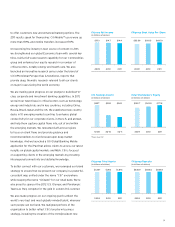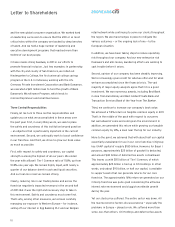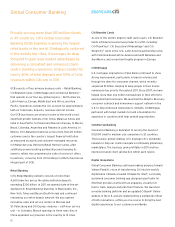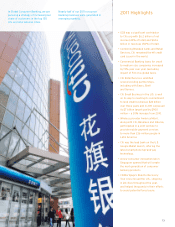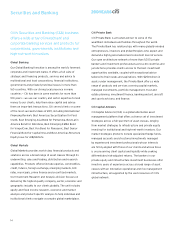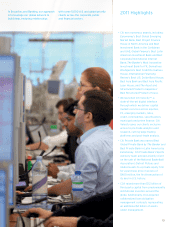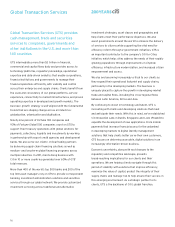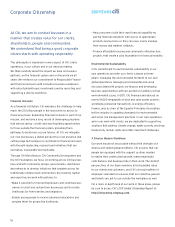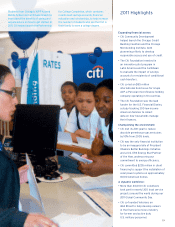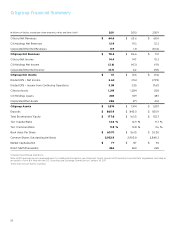Citibank 2011 Annual Report Download - page 12
Download and view the complete annual report
Please find page 12 of the 2011 Citibank annual report below. You can navigate through the pages in the report by either clicking on the pages listed below, or by using the keyword search tool below to find specific information within the annual report.
Letter to Shareholders
10
and the new global consumer organization. We worked hard
on leadership succession to ensure that the 200 or so most
critical roles within the company are backed by deep benches
of talent. And we held a huge number of leadership and
executive development programs that reached more than
10,000 of our best people.
Citi also made strong headway in 2011 in our efforts to
promote financial inclusion. Just two examples: In partnership
with the city and county of San Francisco, we rolled out
Kindergarten to College, the first universal college savings
program in the U.S. In Indonesia, working with the U.S.
Overseas Private Investment Corporation and Bank Danamon,
we executed a $20 million loan to fund the growth of Bank
Danamon’s Microfinance Program, which lends to
microentrepreneurs and small businesses.
Three Central Responsibilities
Finally, let me turn to three central responsibilities and
update you on what we accomplished in these areas over
the past year. First, in everything we do, we seek to place
the safety and soundness of this institution beyond question
— an objective that is particularly important in the current
environment. Second, we continually work to boost confidence
in our franchise. And third, we strive to grow our book value
as much as possible.
First, with respect to safety and soundness, our capital
strength is among the highest of all our peers. We ended
the year with a Basel I Tier 1 Common ratio of 11.8%, up from
10.8% one year ago. We remain highly liquid, with nearly a
quarter of our balance sheet in cash and liquid securities.
And our loan loss reserves remain strong.
Clearly, reducing risk in our trading books and across the
franchise negatively impacted revenues in the second half
of 2011. But it was the right and necessary step to take in
this environment. Safety and soundness must come first.
That’s why, among other measures, we’ve been carefully
managing our exposure to Western Europe — for instance,
selling off our interest in Egg Banking PLC and our Belgian
retail network while continuing to serve our clients throughout
the region. We also have hedges in place to mitigate the
various outcomes — or the ongoing lack of one — to the
European situation.
In addition, we have been taking steps to reduce operating
risk throughout our company. And our new enterprise risk
framework and anti-money laundering efforts are working to
spot trouble before it arises.
Second, opinion of our company has been steadily improving.
We’re increasingly given credit for what we offer and for what
we have accomplished since the financial crisis. The vast
majority of major equity analysts agree that Citi is a good
investment. We won numerous awards, including Best Bank
in Asia from Euromoney and Best Global Private Bank and
Transaction Services Bank of the Year from The Banker.
Third, we continue to increase our company’s book value.
We achieved a 7.8% return on tangible common equity in 2011.
That’s in the middle of the pack with respect to our peers
but well ahead of some and solid given the environment. In
addition, we generated this return while growing our tangible
common equity by 12%, a level near the top for our industry.
More to the point, we achieved that with about half our capital
essentially unavailable for use in our core franchise. Citigroup
has GAAP capital of roughly $180 billion. However, for Basel I
purposes, approximately $25 billion of goodwill is deducted,
and around $40 billion of deferred tax assets is disallowed.
This leaves us with $115 billion of Tier 1 Common, of which
approximately $25 billion is tied up in Citi Holdings. In other
words, only about $90 billion, or half our capital, is available
to support assets that can generate returns for our core
franchise. The approximately 16% return we generated on our
Citicorp franchise was quite good considering the ultra-low
interest rate environment and sluggish worldwide growth
during the year.
Yet our stock price suffered. The entire sector was down. All
the macroeconomic factors discussed above — especially the
problems in Europe — played a role. We suffered more than
some, less than others. Citi Holdings and deferred tax assets


